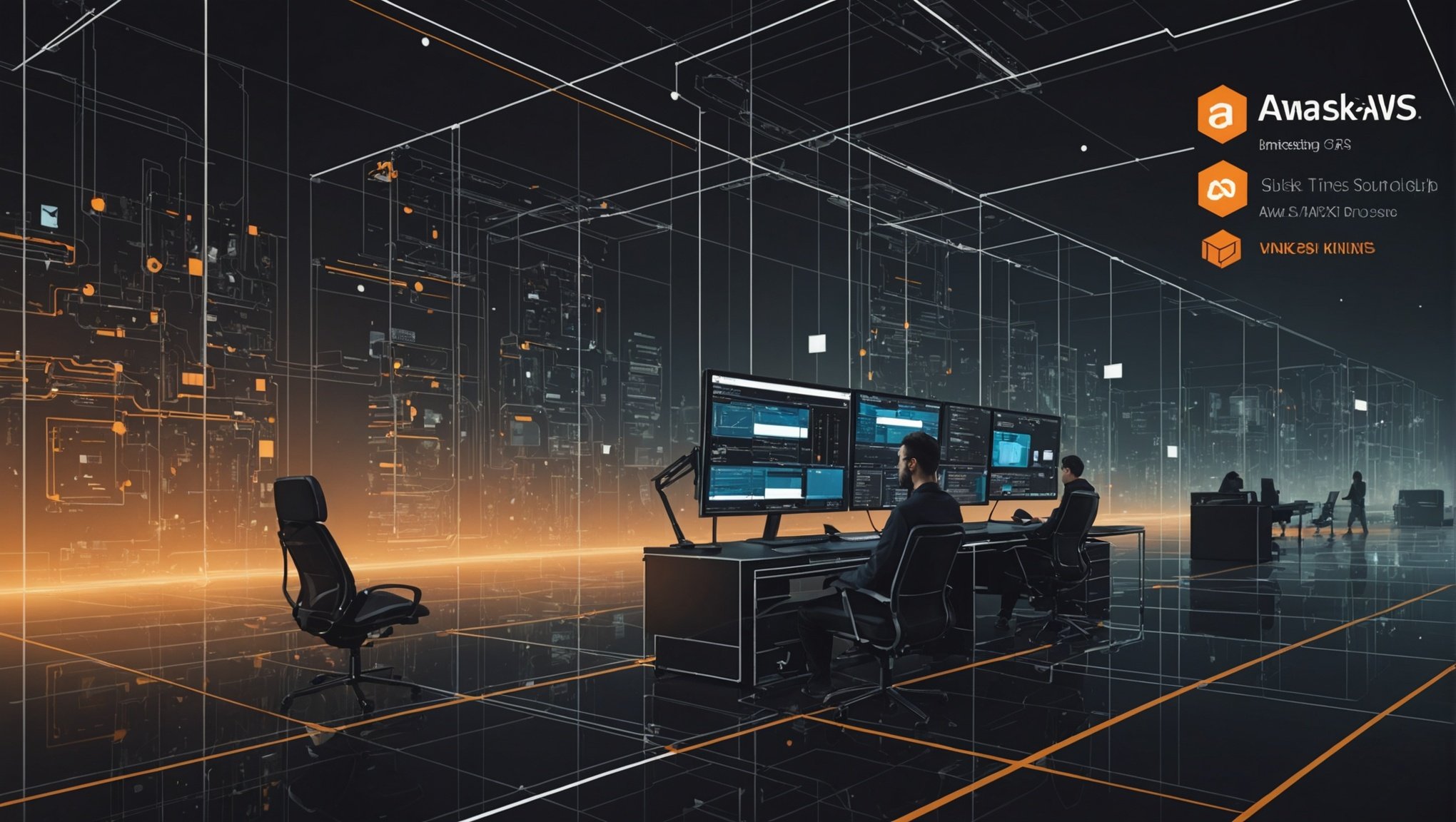Real-time data processing is transforming business operations, enabling organizations to make swift, informed decisions. AWS Kinesis stands out as a powerful tool for streaming data, offering scalability and reliability. This guide provides insights into harnessing Kinesis effectively, covering its key components, practical applications, and best practices. Whether you’re a novice or looking to deepen your expertise, learn how to unlock the full potential of real-time data streams and enhance your data strategy with AWS Kinesis.
Introduction to AWS Kinesis
AWS Kinesis is a powerful tool for real-time data processing, offering a suite of streaming services that enable users to collect, process, and analyze data as it arrives. This capability is crucial for businesses that require immediate insights and actions based on rapidly changing data streams.
Also read : How to Set Up a Robust CI/CD Pipeline for Your Java Spring Boot Application Using Bitbucket Pipelines
At the heart of AWS Kinesis are three key components: Kinesis Data Streams, Kinesis Data Firehose, and Kinesis Data Analytics. Kinesis Data Streams allow for the continuous capture of gigabytes of data per second from hundreds of thousands of sources, such as website clickstreams, database event streams, and social media feeds. This component is essential for applications that require low-latency processing.
Kinesis Data Firehose, on the other hand, is designed to deliver real-time streaming data to destinations like Amazon S3, Amazon Redshift, and Amazon Elasticsearch Service. It automatically scales to match the throughput of your data and requires no ongoing administration.
Topic to read : Essential Steps to Establish a Secure Email Gateway for Phishing Attack Prevention
Lastly, Kinesis Data Analytics allows users to process and analyze streaming data using standard SQL. This makes it accessible for those familiar with SQL to gain insights without needing to learn complex programming languages.
AWS Kinesis is utilized across various industries, from financial services for fraud detection to media and entertainment for live video analytics, demonstrating its versatility and effectiveness in real-time data scenarios.
Setting Up AWS Kinesis
Embarking on the journey of AWS Kinesis setup requires a clear understanding of the prerequisites and configuration steps. This section will guide you through the essentials, ensuring a smooth setup process.
Prerequisites for Setup
Before diving into the configuration, ensure that you have an active AWS account with the necessary permissions. You’ll need access to services such as Kinesis Data Streams, Kinesis Data Firehose, and Kinesis Data Analytics. Familiarity with AWS Management Console will be advantageous.
Step-by-Step Configuration Guide
- Access AWS Management Console: Log in to your AWS account.
- Navigate to Kinesis: Select the Kinesis service from the console.
- Create a Data Stream: Click on “Create Data Stream” and specify the stream name and shard count.
- Configure Data Firehose: Set up delivery streams by selecting your destination (e.g., Amazon S3).
- Set Up Data Analytics: Use SQL queries to process data in real-time.
Common Setup Errors and Solutions
- Error: Insufficient permissions.
- Solution: Verify IAM roles and policies.
- Error: Incorrect stream configuration.
- Solution: Double-check shard count and throughput settings.
By following these steps and troubleshooting tips, setting up AWS Kinesis can be a seamless experience.
Practical Use Cases of AWS Kinesis
AWS Kinesis is pivotal in various real-time analytics applications across industries, showcasing its versatility and effectiveness. In financial services, Kinesis is employed for real-time fraud detection. By analyzing transaction streams instantaneously, financial institutions can identify and prevent fraudulent activities as they occur, safeguarding assets and maintaining trust.
In the realm of IT operations, Kinesis facilitates the streaming of log and event data. This capability allows IT teams to monitor system health and performance continuously. By processing log data in real-time, potential issues can be detected and resolved swiftly, minimizing downtime and enhancing operational efficiency.
Moreover, AWS Kinesis plays a crucial role in IoT data processing. With the proliferation of IoT devices, the ability to process and analyze data from these devices in real-time is invaluable. Applications range from smart home automation to industrial monitoring systems, where immediate insights can lead to improved efficiency and innovation.
These diverse use cases underscore the importance of AWS Kinesis in delivering timely insights and driving informed decision-making across sectors. Whether in finance, IT, or IoT, the ability to handle vast streams of data in real-time is a game-changer.
Code Examples for AWS Kinesis
To effectively harness the power of AWS Kinesis, understanding its programming aspects and utilizing the appropriate SDKs is crucial.
Using AWS SDKs for Kinesis
AWS offers SDKs in multiple programming languages, including Java, Python, and JavaScript, making it accessible for developers across platforms. These SDKs simplify the process of interacting with AWS services, including Kinesis, by providing pre-built functions and classes.
Sample Code for Data Ingestion
Ingesting data into Kinesis Data Streams can be accomplished with just a few lines of code. For instance, using the AWS SDK for Python (Boto3), you can create a stream and put records into it:
import boto3
kinesis_client = boto3.client('kinesis')
response = kinesis_client.put_record(
StreamName='your_stream_name',
Data=b'your_data',
PartitionKey='your_partition_key'
)
Real-time Data Processing Code Snippets
To process data in real-time using Kinesis Data Analytics, SQL queries can be employed. For example, to filter specific records:
SELECT STREAM * FROM "your_stream" WHERE your_condition;
These examples illustrate the ease of integrating AWS Kinesis into applications, enabling efficient data ingestion and real-time processing. By leveraging these code snippets, developers can quickly deploy solutions tailored to their specific data processing needs.
Troubleshooting AWS Kinesis
Navigating the complexities of AWS Kinesis can sometimes lead to challenges, particularly when dealing with data processing delays and shard limits. Understanding these common issues and their solutions is crucial for seamless operation.
Identifying and Resolving Data Processing Delays
Data processing delays in AWS Kinesis often stem from insufficient resources or improperly configured shards. To address this, ensure your shard count aligns with your data throughput requirements. Monitoring tools can help identify bottlenecks, allowing for timely adjustments. Increasing the number of shards or optimizing data processing logic can significantly reduce delays.
Handling Data Retention and Shard Limits
Data retention settings in Kinesis determine how long data is stored before being deleted. If retention periods are too short, valuable data may be lost. Conversely, exceeding shard limits can lead to processing errors. Regularly review and adjust retention settings and shard configurations to maintain data integrity and processing efficiency.
Best Practices for Monitoring and Logging
Implementing robust monitoring and logging practices is essential for proactive troubleshooting. Utilize Amazon CloudWatch to track metrics such as shard utilization and error rates. Setting up alerts for anomalies ensures that issues are detected and resolved promptly, safeguarding your data processing operations.
Performance Optimization Strategies for AWS Kinesis
Enhancing the performance optimization of AWS Kinesis is crucial for maximizing efficiency and ensuring seamless data processing. Implementing best practices can significantly improve system capabilities.
Scaling Kinesis Data Streams
To effectively scale Kinesis Data Streams, consider dynamically adjusting the number of shards based on real-time demand. This can be achieved by monitoring throughput metrics and using auto-scaling policies. Increasing shard count during peak loads and reducing it during off-peak times ensures optimal resource utilization, maintaining a balance between performance and cost.
Optimizing Data Throughput
Optimizing data throughput involves minimizing latency and maximizing the speed at which data is processed. Techniques such as batching records, compressing data, and using efficient partition keys can enhance throughput. Additionally, leveraging parallel processing and fine-tuning buffer sizes can further reduce latency, ensuring timely data delivery and processing.
Cost Management Techniques
Managing costs effectively is vital for sustainable use of AWS Kinesis. Employing strategies like right-sizing shards and utilizing reserved capacity can lead to significant savings. Regularly reviewing usage patterns and adjusting configurations to align with actual needs helps avoid unnecessary expenses. Implementing cost-effective practices ensures that businesses benefit from AWS Kinesis without overspending.
Frequently Asked Questions about AWS Kinesis
When exploring AWS Kinesis, users often have common questions. Here are precise answers to some of these frequently asked inquiries to enhance your understanding and usage of the service.
What is AWS Kinesis used for?
AWS Kinesis is primarily used for real-time data processing and analysis. It enables users to collect and process large streams of data in real-time, which is crucial for applications requiring immediate insights, such as fraud detection and live analytics.
How does Kinesis manage data retention?
Data retention in Kinesis is configurable, allowing you to store data for a specified duration before it is automatically deleted. This feature ensures that you can retain data long enough for your processing needs while optimizing storage costs.
Where can I find resources for further learning?
To deepen your understanding, consider exploring AWS’s official documentation, online tutorials, and webinars. Additionally, community forums like AWS Developer Forums and platforms such as Stack Overflow offer valuable insights and user support.
How can I access AWS support channels?
AWS provides multiple support channels, including the AWS Support Center and premium support plans. These resources offer technical assistance and guidance tailored to your specific needs, ensuring efficient problem resolution.






